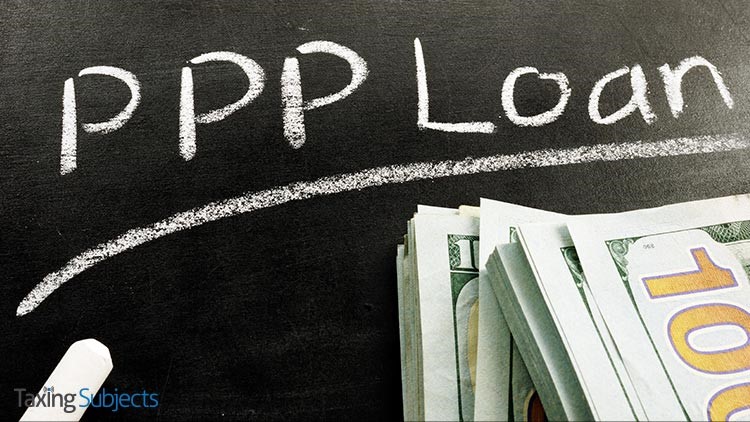by MEA Tax Advisors | Jun 25, 2020 | Tax Tips and News
The Internal Revenue Service is giving tornado, thunderstorm and flooding victims in three states extra time to file their various tax returns and make tax payments.
Severe storms raked parts of Mississippi, Tennessee and South Carolina in April; those areas have designated as qualified for individual assistance by the Federal Emergency Management Agency (FEMA). Currently, this includes Clarke, Covington, Grenada, Jasper, Jefferson Davis, Jones, Lawrence, Panola and Walthall counties in Mississippi; Bradley and Hamilton counties in Tennessee; and Aiken, Barnwell, Berkeley, Colleton, Hampton, Marlboro, Oconee, Orangeburg and Pickens counties in South Carolina.
Taxpayers in these counties—and counties added later to the federal disaster declaration—will have until Oct. 15, 2020, to file their individual and business tax returns and to pay any tax due.
Taxpayers in areas added to the federal declaration later will automatically get the same filing and payment relief. The current list of eligible counties and towns is available on the disaster relief page on IRS.gov.
What are the terms of the disaster area tax relief?
The exact extent of the tax relief in this new package is laid out in an IRS release:
“The tax relief postpones various tax filing and payment deadlines that occurred starting on April 12. As a result, affected individuals and businesses will have until Oct. 15, 2020, to file returns and pay any taxes that were originally due during this period. This includes 2019 individual and business returns that, due to COVID-19, were due on July 15. Among other things, this also means that affected taxpayers will have until October 15 to make 2019 IRA contributions” the IRS continues.
The Oct. 15 deadline also applies to estimated tax payments for the first two quarters of 2020 that were due on July 15, and the third-quarter estimated tax payment normally due on September 15. It also includes the quarterly payroll and excise tax returns normally due on April 30 and July 31.
Do you need to apply for disaster area tax relief?
The IRS automatically provides such filing and payment relief to any taxpayer who has an address on file within the disaster area. Taxpayers don’t need to contact the agency to see if they qualify.
If a taxpayer in the disaster area gets a late-filing or late-payment penalty notice from the IRS that has an original or extended filing, payment or deposit due date that falls within the postponement period, relief is only a phone call away. The taxpayer can merely call the phone number in the written notice to have the penalty abated.
Sometimes a taxpayer may live outside the disaster area, but has records needed to meet a deadline inside the stricken area. If the deadline occurs during the postponement period, the IRS will work with the taxpayer to work out a solution. This include workers assisting relief activities and who are affiliated with a recognized government or philanthropic organization.
Individuals and businesses in a federally declared disaster area who suffered uninsured or unreimbursed disaster-related losses can choose to claim them on either the return for the year the loss occurred (in this case, the 2020 return normally filed next year), or the return for the prior year. This means that taxpayers can, if they choose, claim these losses on the 2019 return they are filling out this tax season.
Those taxpayers who qualify for relief but live outside the federally declared disaster area need to call the IRS at 866-562-5227 once normal operations resume. For more information on services currently available from the IRS, visit the IRS Operations and Services page at IRS.gov/coronavirus.
Any taxpayer claiming a loss due to these storms should write the appropriate FEMA declaration number on the return. these numbers are: 4536 for Mississippi; 4541 for Tennessee; and 4542 for South Carolina. For more details, check out Publication 547.
For general information about disaster recovery, visit disasterassistance.gov.
– Story provided by TaxingSubjects.com
by MEA Tax Advisors | Jun 9, 2020 | Tax Tips and News
Individual taxpayers and corporations have some extra breathing room for paying their 2020 estimated taxes. The IRS reminds individuals and corporations alike that the estimated tax payments normally due on April 15 and June 15 have been pushed back to July 15, without penalty.
An IRS news release says the shift came in response to the COVID-19 pandemic.
“This relief applies to federal income tax returns and tax payments (including tax on self-employment income) otherwise due April 15, 2020. This relief does not apply to state tax payments or deposits or payments of any other type of federal tax.”
Who needs to pay quarterly estimated tax?
Most often, self-employed taxpayers need to pay quarterly installments of estimated tax. This is especially true of those engaged in the sharing or “gig” economy. A substantial part of their income isn’t subject to withholding. Other income not subject to withholding includes interest, dividends, capital gains, alimony, and rental income.
Some taxpayers are under special rules: Farmers, fishermen, casualty and disaster victims, those who recently became disabled, recent retirees, and those whose income is uneven during the course of the year all are governed by special rules.
For self-employed taxpayers, underpaying taxes is a very real problem. They can avoid a penalty for underpaying by either owing less than $1,000 at tax time, or by paying most of their taxes during year. In 2020, that means making payments of at least 90% of the tax expected on their 2020 return.
The IRS likes to say that income taxes are pay-as-you-go. That means taxpayers need to may most of their taxes during the year as income is received. There are two ways to do that:
- Withholding from pay, pension or certain government payments such as Social Security; and/or
- Making quarterly estimated tax payments during the year.
How do I estimate tax withholding?
If a taxpayer has salaries and wages to report, they can avoid having to pay estimated taxes by asking their employer to withhold more tax from their earnings. They would file a new Form W-4 to do this.
For the taxpayers who receive a paycheck, the IRS Tax Withholding Estimator can help them make sure the right amount of tax is being withheld from their pay.
The Estimator is now more mobile-friendly than before. This tool offers workers—as well as retirees, self-employed taxpayers and others—a clear, step-by-step method for checking their withholding. It protects against having too little tax withheld and thus facing an unexpected tax bill or penalty at tax time next year.
When it comes to actually paying estimated taxes, Form 1040-ES, Estimated Tax for Individuals, includes instructions to help taxpayers figure their estimated taxes. To pay electronically, check out IRS.gov/payments.
The IRS offers two free electronic payment options. Direct Pay allows taxpayers to schedule their estimated federal tax payments up to 30 days in advance. The Electronic Federal Tax Payment System (EFTPS) allows payments up to 365 days in advance.
Help for estimated taxes is available on IRS.gov. For example, taxpayers can search the Interactive Tax Assistant, Tax Topics, Frequently Asked Questions, and Tax Trails to get answers to common questions.
Source: IR-2020-117
– Story provided by TaxingSubjects.com
by MEA Tax Advisors | Jun 8, 2020 | Tax Tips and News
The American Institute of CPAs (AICPA) is encouraging small businesses to apply for Paycheck Protection Program (PPP) loans ahead of the June 30th deadline. The Institute sees the recently signed PPP Flexibility Act as a “critical, positive step for small business and the nation’s economy.”
The PPP Flexibility Act includes a number of key provisions:
- Allows forgiveness for expenses beyond the 8-week covered period to 24 weeks;
- Extends the timeframe to restore employee levels to Dec. 31, 2020;
- Increases the current limitation on nonpayroll expenses (such as rent, utility payments and mortgage interest) for loan forgiveness from 25% to 40%;
- Allows new borrowers five years to repay loan instead of two; existing PPP loans can be extended up to five years if lender and borrower agree; and
- Ensures full access to payroll tax deferment for businesses that take PPP loans.
The AICPA’s website has an additional summary of the Act’s main points.
The Institute’s leadership says it’s behind the PPP loans because they help a vital sector of the American economy: small business.
“CPA firms have worked tirelessly to help their small business clients understand, as best possible, the PPP’s policies and apply for financial relief,” said Mark Koziel, CPA, AICPA executive vice president of firm services. “Some small businesses may have hesitated to apply for PPP funds because of challenges with the old forgiveness rules. We encourage CPA firms to share how the PPP Flexibility Act greatly improved these rules, which may help more small businesses apply for relief.”
An economy on the mend?
Erik Asgeirsson, CEO and president of CPA.com, said recent unemployment numbers provided a measure of optimism on the “significant” impact the PPP program is having in retention and rehiring of workers.
“Over the past two months, the 44,000 CPA firms tied to the AICPA have played a critical role in delivering this needed business relief to their clients. We are going to continue to work with the AICPA-led coalition to help answer new questions related to these recent changes,” Asgeirisson said.
AICPA says it’s been a strong advocate for giving small business better flexibility and guidance on the use of PPP funds. Institute posts have noted that recent PPP guidance left a lot of unanswered questions and didn’t provide enough flexibility for loan recipients. This made it tough for small businesses — and the CPA firms that advise them — to make critical decisions.
AICPA has created a loan-forgiveness calculator to give small business a commonly accepted approach to PPP loan forgiveness. It was built with the input from AICPA’s small-business funding coalition. The group’s members provide services and support to businesses that employ more than 75 million people in total.
– Story provided by TaxingSubjects.com



